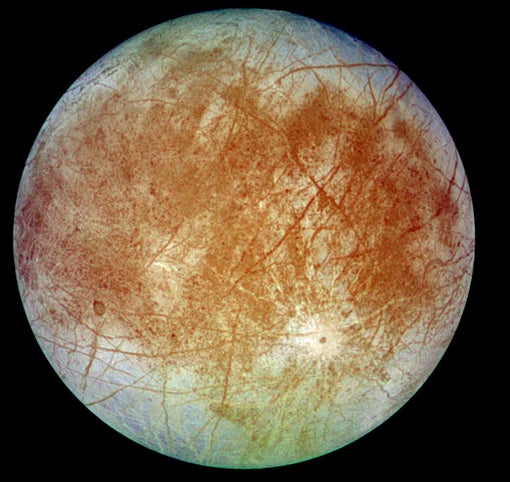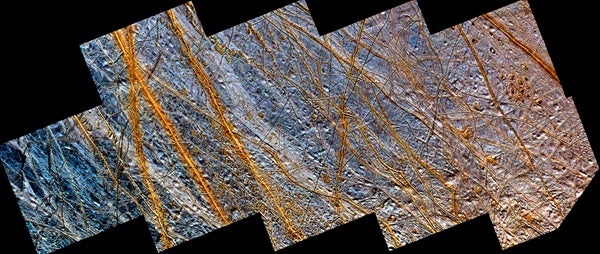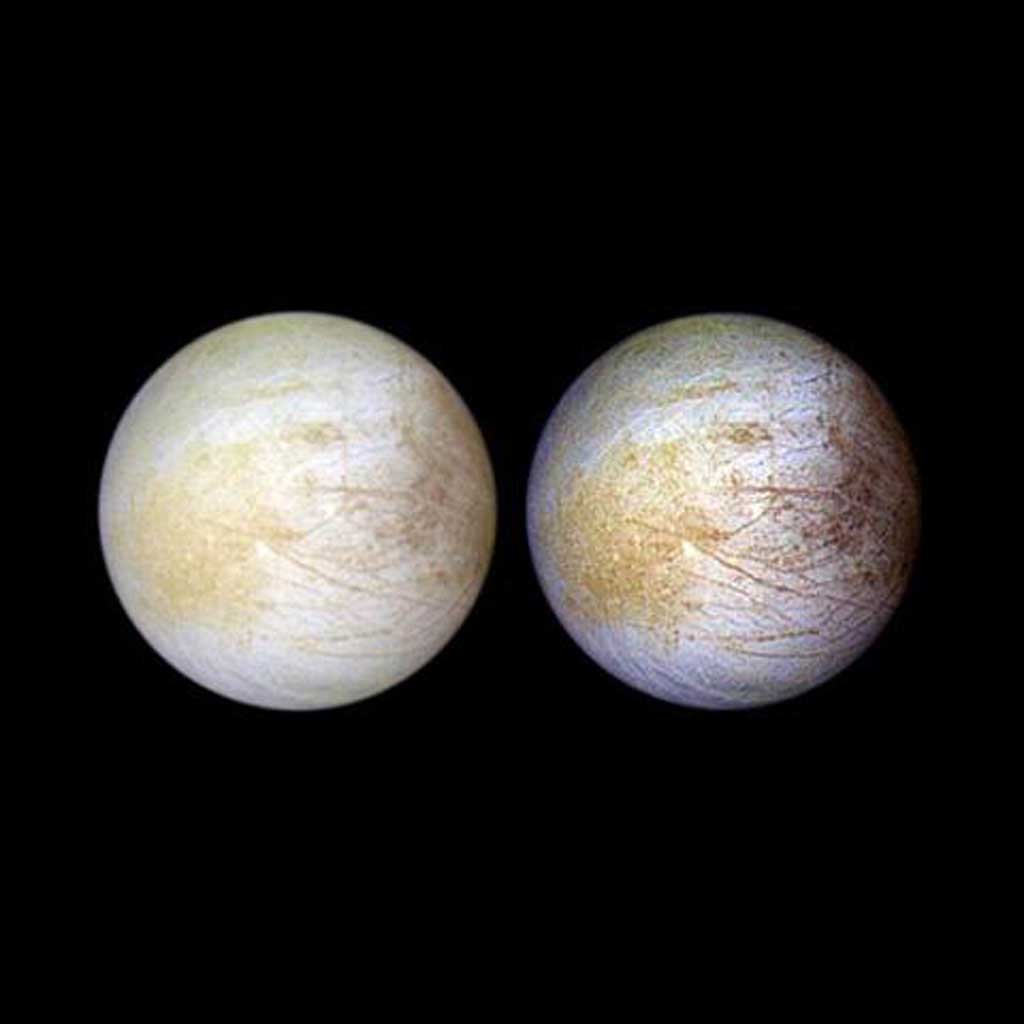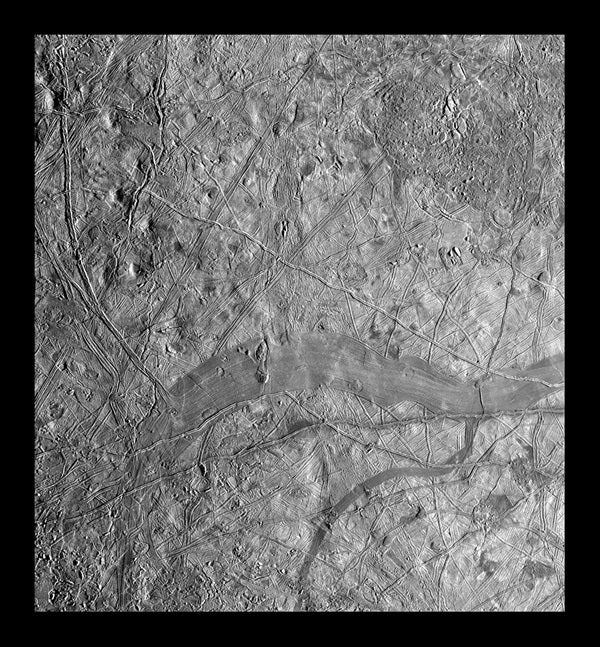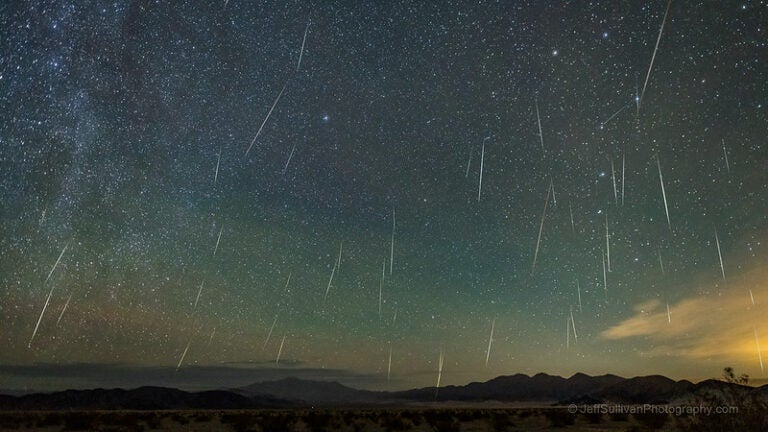When Galileo Galilei first spotted Jupiter’s largest moons four centuries ago, it didn’t cross his mind that he might be gazing toward extraterrestrial life. Even as the centuries passed, the little dots circling Jove offered no detail or information, except for their odd orbital basics, meaning that innermost Io whizzes around Jupiter four times for every two orbits of Europa and for every one circuit of giant Ganymede. The moons are locked in perfect sync with each other like a marching band.
Occasionally, sharp-eyed youngsters reported seeing all four with just their naked eyes. These claims are believable because the moons are 5th magnitude, well within the naked-eye limit, and the only real challenge is discerning them against the harsh glare of Jupiter itself. But all such observational niceties gave way to stunning images and a flood of information when the United States sent a series of spacecraft to take close-up images of these large satellites; Pioneers 10 and 11 and the two Voyager spacecraft in the 1970s, the dedicated Galileo mission in 1989, and the New Horizons flyby in 2007 transformed each moon into a unique living world.

Bringing the universe to your door. We’re excited to announce Astronomy magazine’s new Space and Beyond subscription box – a quarterly adventure, curated with an astronomy-themed collection in every box. Learn More >>.
The innermost two moons clearly proved more “living” than the others — they changed. They altered their appearance from visit to visit. Io does this with nonstop volcanoes. Europa does the same, except now the animation mechanism is not fire but ice. Water ice.
Bizarre, doubled-up straight lines looking like snowmobile tracks crisscross Europa’s otherwise smooth white surface. Scientists addicted to esoteric nomenclature dubbed them lineae — lines in English. What could these be? Closer examination showed they were not permanent features at all. They mutated.
Then it hit us. Europa is covered with floating ice sheets. Those lineae indicate where sheets rub against each other — where water from below oozes into the airless sky and settles on both sides of the crevices to form parallel frozen hills. Meanwhile, we saw other dark surface blotches as extended meltwater features.
This was big. Here is the first new ocean since Balboa “found” the Pacific half a millennium ago. These are the first known pools of liquid water in the universe. Later, orbiting spacecraft revealed the wispy signature of sodium atoms floating above Europa — oceans of salt water.
The implications scarcely require a degree in planetary geology. Liquid water can only exist under pressure and within a narrow temperature range. On Earth, air supplies the pressure and the Sun bestows the warmth. But Europa has no air, and sunlight there is 27 times feebler than ours. That’s not enough heat.
The secret mechanism enabling liquid water starts at Europa’s surface. The floating ice keeps the liquid under pressure and also protects it from the vacuum of space. Meanwhile, the real keeper of the juice is the ongoing warmth generated deep below. The machinery is tidal. Europa is constantly twisted and distorted by the close presence of giant Jupiter, which is 318 times more massive than Earth. In addition, that locked-in orbital synchronization with the inner moon Io means poor Europa is tugged with every orbit, tidally stretching its entire body. The net result is a continuous heat supply, more than enough to keep its oceans cozy and in liquid form.
Over the eons, comets bombarded Europa (like Jupiter and its other moons), helplessly pulled in by the intractable jovian gravity. Studies have shown that such comets often contain complex amino acids, the building blocks of life. These are continually delivered to Earth and probably supplied the initial steps toward fashioning life’s proteins here. On Europa, the process has been even more intense, and has been ongoing for just as long — more than 4 billion years.
Since life began in Earth’s oceans, there is no reason the same processes couldn’t have simultaneously occurred on Europa. Indeed, it would be more puzzling if we don’t find life there than if we do.
This, then, is why Europa easily makes our 50 Weirdest list. It is peculiar not so much for its smoothest-of-all moon surfaces, but for the fact that it has the first known extraterrestrial oceans (there’s now evidence for sister water world Enceladus) and remains the likeliest place in the universe to harbor life, so far as we know.
A proposed NASA mission, slated for liftoff in the 2020s, would place a spacecraft in orbit around Jupiter in order to perform a detailed investigation of Europa via repeated close flybys. It will, of course, be unmanned. Europa’s surface gets a steady 540 rads of daily radiation, enough to kill a human in two days. Although space enthusiasts hoped for a lander that could burn its way through the ice to probe the ocean below, budget considerations mean the mission will only involve flybys, which some regard as pointless.
But someday, we’ll drill down and see what, if anything, swims in Europa’s warm seas.

